The SEIS/EIS Compliance Statement: How and When to File

Written by:
Daniel Scott
Partner & Head of Accounting
Investor Decks, Cap Tables and Compliance: Accounting for Investment
Getting HMRC advance assurance is a huge milestone. But it’s not the final step. To actually unlock tax relief for your investors, you must file a compliance statement.
This is one of the most important parts of the SEIS/EIS process and one of the most commonly misunderstood. File too early, miss the deadline, or make an error in the paperwork, and your investors won’t get their SEIS3/EIS3 certificates. That means no tax relief, frustration for backers, and potentially real damage to your credibility as a founder.
This post in our Startups, Shares & SEIS series explains what the compliance statement is, when to file it, and how to get it right first time.
What is the SEIS/EIS Compliance Statement?
The compliance statement (Form SEIS1 for Seed Enterprise Investment Scheme, Form EIS1 for Enterprise Investment Scheme) is the formal return you submit to HMRC after issuing shares. It confirms that:
- Shares were issued in line with SEIS/EIS rules,
- The money raised is being used for qualifying business activity, and
- Your company still meets the conditions of the scheme.
Only once HMRC approves your compliance statement will you be authorised to issue SEIS3/EIS3 certificates to your investors. Without these, investors cannot claim the relief they were promised.
When Should You File?
You cannot file immediately after issuing shares. HMRC requires proof that your business is genuinely active and that the funds are being used in line with the rules.
- SEIS: You may file once your company has been trading for at least 4 months or has spent at least 70% of the SEIS funds on qualifying activities.
- EIS: You may file once your company has carried out qualifying business activity for at least 4 months (no spending threshold applies).
For both schemes, the compliance statement must be filed within two years of the later of:
- The end of the tax year when the shares were issued, or
- The four-month trading/activity milestone.
SEIS and EIS Share Issue Sequencing
A key point: SEIS shares must always be issued before EIS shares. If you try to issue them in the wrong order, HMRC will refuse relief.
From a practical point of view, this sequencing creates an extra compliance cost. Each share issue requires its own compliance statement, so if you split SEIS and EIS shares into multiple tranches on different dates, you’ll need to file multiple forms. To avoid unnecessary duplication, it’s usually best practice to issue all SEIS shares on one day and all EIS shares on another. This keeps filings simple, reduces professional fees, and speeds up the compliance process.
What Do You Need to Provide?
When you submit SEIS1 or EIS1, HMRC expects consistency across all your filings. That means:
- Company details: UTR, Companies House registration number, contact details.
- Share issue details: Dates, share classes, number issued, and price paid (must match your SH01 filings).
- Use of funds: Evidence of how the capital has been or will be used, in line with your advance assurance submission.
- Business activities: A description of your trade, showing why it qualifies under the rules (avoiding excluded activities like property development or financial services).
- Eligibility confirmation: Proof your company still meets scheme conditions (age, employee count, gross assets).
- Supporting documents: Articles of Association, SH01s, board minutes, subscription agreements, and an up-to-date cap table showing pre- and post-investment ownership.
- Investor details: A list of each investor, how much they invested, and how many shares they received.
HMRC may also request your business plan or pitch deck if it wasn’t included at advance assurance stage.
Common Mistakes Founders Make
- Filing too early: submitting before the 4-month or 70% threshold (for SEIS).
- Mismatched numbers: SH01 filings and compliance statements not aligning.
- Non-qualifying shares: issuing preference or redeemable shares instead of full-risk ordinary shares.
- Separate share issues: forgetting that SEIS and EIS must be filed separately, or splitting share issues unnecessarily across multiple dates.
- Missing deadlines: failing to file within the two-year limit, leading to a permanent loss of relief.
SEIS/EIS Compliance Checklist
Before you file, run through this checklist:
- Confirm 4 months trading or 70% of SEIS funds spent (SEIS), or 4 months of activity (EIS).
- Check the deadline: within 2 years of end of the tax year shares were issued (or later of 4-month rule).
- Issue all SEIS shares on one date and all EIS shares on another to reduce compliance costs.
- Ensure SH01 filings match the compliance statement.
- Prepare board minutes approving the share issue.
- Confirm Articles of Association and share classes are SEIS/EIS compliant.
- Compile investor details: name, amount subscribed, shares issued.
- Update your cap table showing ownership before and after.
- Gather evidence of business activity (invoices, contracts, R&D spend).
- Attach business plan or pitch deck if not already sent to HMRC.
- Ensure no excluded activities (e.g. property, finance, energy generation).
- Submit SEIS1 and/or EIS1 separately if both schemes apply.
- Once HMRC approves, issue SEIS3/EIS3 certificates promptly.
Why This Step Matters
Investors expect certificates quickly. Any delay reflects badly on your company and may damage relationships. Filing accurately and on time reassures investors that you are organised, trustworthy, and worthy of further backing.
Frequently Asked Questions
Q: What’s the difference between advance assurance and the compliance statement?
Advance assurance is HMRC’s indication that your company
should qualify before you issue shares. The compliance statement is the proof, submitted after the share issue, that you actually met the conditions. Both are needed if your investors want tax relief.
Q: Can I file for both SEIS and EIS together?
No: you must file a separate compliance statement for each scheme. Remember too that SEIS shares must be issued before EIS shares.
Q: Do SEIS and EIS shares have to be issued on different dates?
Not necessarily, but it’s strongly recommended. All SEIS shares should be issued on one date and all EIS shares on another; otherwise you’ll need multiple compliance statements, which increases time and cost.
Q: How long does HMRC take to process compliance statements?
HMRC’s stated timeframe is 6–8 weeks, but in practice we see well-prepared submissions processed in as little as 2–4 weeks. Poorly prepared filings, or ones with inconsistencies, can take months.
Q: What happens after HMRC approval?
You’ll receive a reference number (SEIS2/EIS2) that allows you to issue SEIS3 or EIS3 certificates to your investors. They use these certificates to claim their reliefs.
Q: What if I miss the two-year deadline?
Unfortunately, there’s no extension. If you miss it, your investors lose their tax relief permanently.
How We Can Help
At OnTheGo Accountants, we handle SEIS/EIS compliance from start to finish. We make sure your paperwork matches across Companies House, HMRC, and your investor records, so you can focus on growth while we handle the detail.
If you’d like support with your SEIS1 or EIS1 submission or just a second pair of eyes or even a consultation around your specific approach contact us at info@onthegoaccountants.co.uk.
Next in the series:
Claiming SEIS/EIS Tax Relief — What Your Investors Need from You





